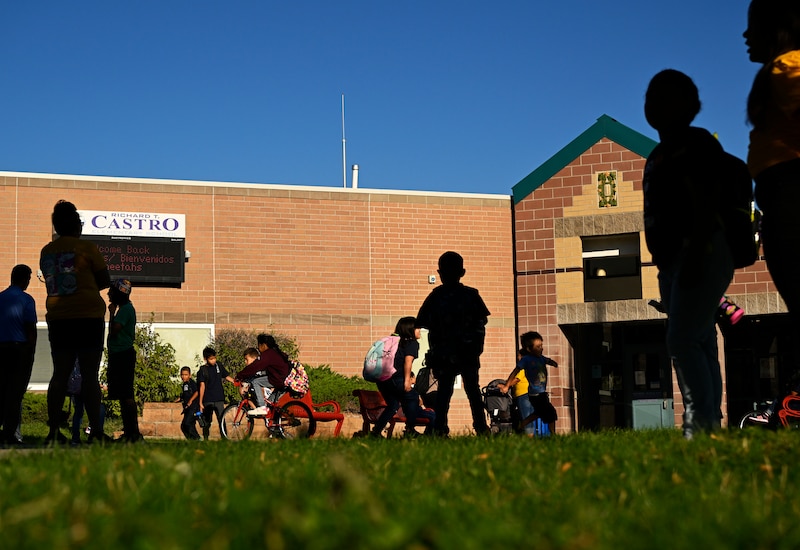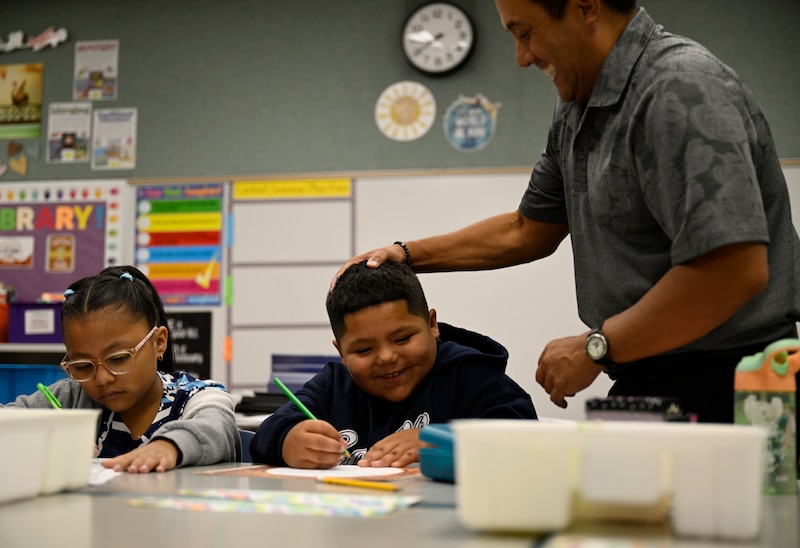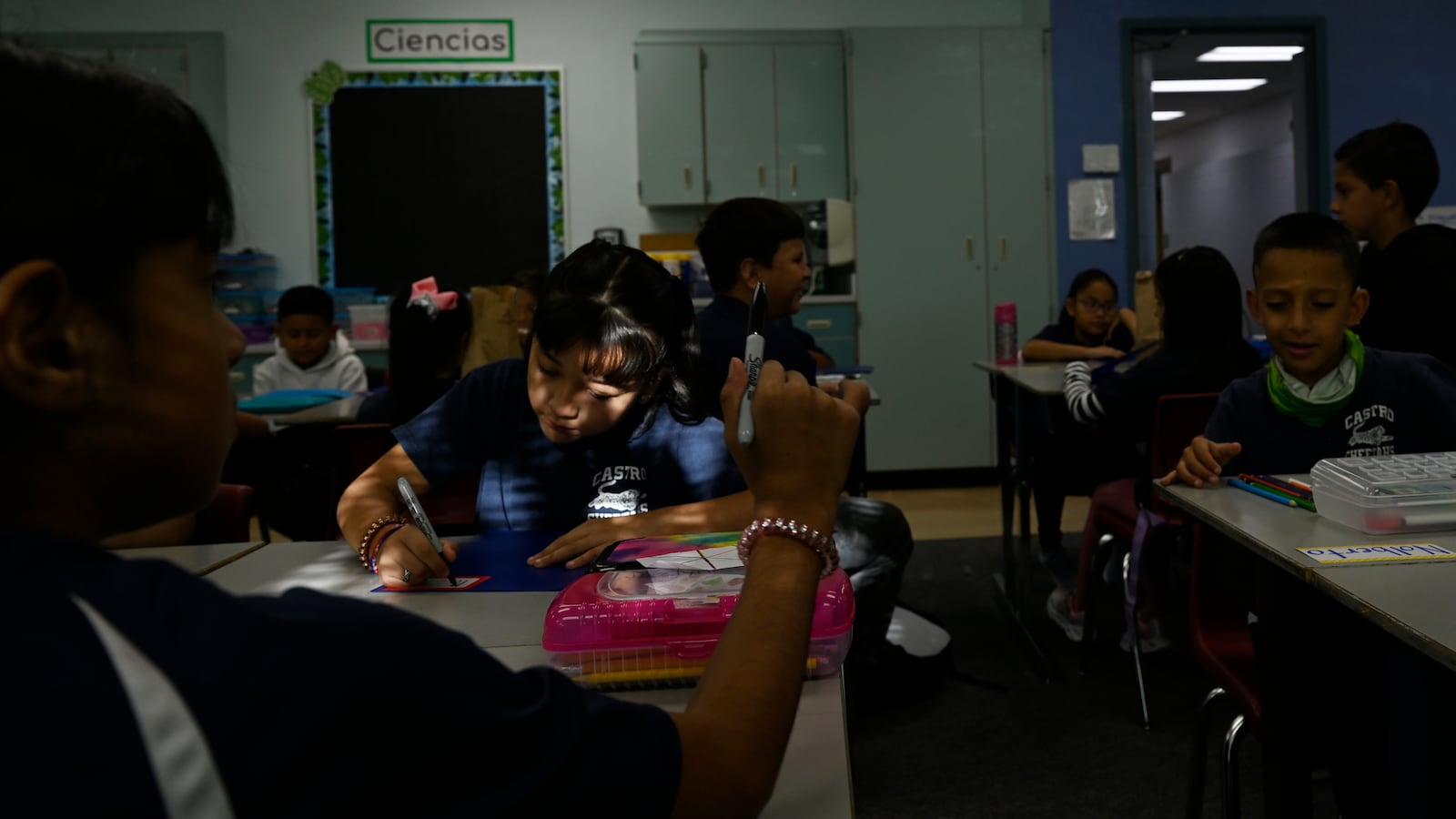Before school started this week, two numbers — 85 and 69 — showed that the perseverance of teachers and students at Castro Elementary in southwest Denver was paying off.
The numbers mean that as the pandemic stretches into a fourth school year, Castro is doing a phenomenal job of helping students make progress, even if most are still far from grade level.
“The staff and the teachers here just didn’t give up,” said Patricia Nestorick, who has worked at Castro for 13 years and is now the dean of instruction. “They just kept digging in.”
The numbers are known as growth scores. They show how much progress students made on state math and literacy tests from year to year.
Castro’s scores show that its students made more progress in math than 85% of comparable Colorado students — defined as those with similar test scores the year before. Nearly all of Castro’s students are Hispanic and from low-income families. The school also has a bilingual program where students learn primarily in Spanish.
In literacy, Castro students made more progress than 69% of comparable students. The high growth is even more important because most Castro students are behind: only 21% of third- through fifth-graders scored on grade level in literacy, while just 7% scored that way in math.
“We have a lot of work to do still,” said Principal Gilberto Muñoz. “But I think the growth scores really do show we’re at least moving in the right direction.”

The challenges at Castro are similar to those facing elementary schools across the city: declining enrollment, pandemic-related trauma, and academic gaps. And their strategies for addressing them involve all the latest education buzzwords: accelerated learning, culturally and linguistically responsive education, and social emotional learning.
The strategies are easy to say and hard to do. But Castro has been working on some of them for years. Here’s what they looked like on the third day of school this year.
Third graders decorated the white covers of their brand new journals, which teacher Ryan Fune described as a place for them to process their private thoughts if they’re having a bad day so they can be their best student, do their best thinking, and have their “healthiest heart.”
Fifth graders read quotes from the book “Esperanza Rising,” about a young Mexican girl whose family goes to California during the Great Depression in search of work. They used the quotes to infer the theme of their first literacy unit, which is about human rights.
And on a giant piece of sticky paper, second graders made a class contract — a set of promises for how they’d treat each other. A boy named James suggested the teacher add “patient.”
“Yeah, of course!” teacher Katherine Matthews said. “When somebody is needing some ‘think time,’ we’re not going to jump in right away and give them the answer, right? That takes away from their learning. It’s good for them to be able to work through it on their own.”
Muñoz said allowing students “think time” is an example of what culturally responsive education looks like in the classroom. It’s more than having books, such as “Esperanza Rising,” with characters that share students’ cultural identity. It’s also about having high expectations for students who have historically been marginalized in school.
“Teachers are nurturers and they want to help their kids,” Muñoz said. “But we want to make sure that doesn’t come at the expense of kids learning and grappling with a concept and struggling a little bit — just that productive struggle.”

Fifth-grade teacher Maddi Dullea admitted that can be hard to do, especially when students have gaps in their learning because of the pandemic. She and other Castro staff said they felt deflated this summer when they saw how few Castro students scored on grade level on the state tests.
But the high growth scores, which were released later, lifted their spirits.
Dullea attributed the growth to “working with kids on persevering through challenges.”
“I had a lot of kids who, while they were motivated and wanted to do well, would feel really defeated because they were given a big challenge and were missing the skills they needed to do it successfully,” Dullea said of her students last year.
When they were faced with a tough problem, she’d tell her students to ask themselves: “Is this too overwhelming? Or is it just challenging right now and I can keep going?”
That’s exactly what Castro plans to do this year.
Melanie Asmar is a senior reporter for Chalkbeat Colorado, covering Denver Public Schools. Contact Melanie at masmar@chalkbeat.org.


